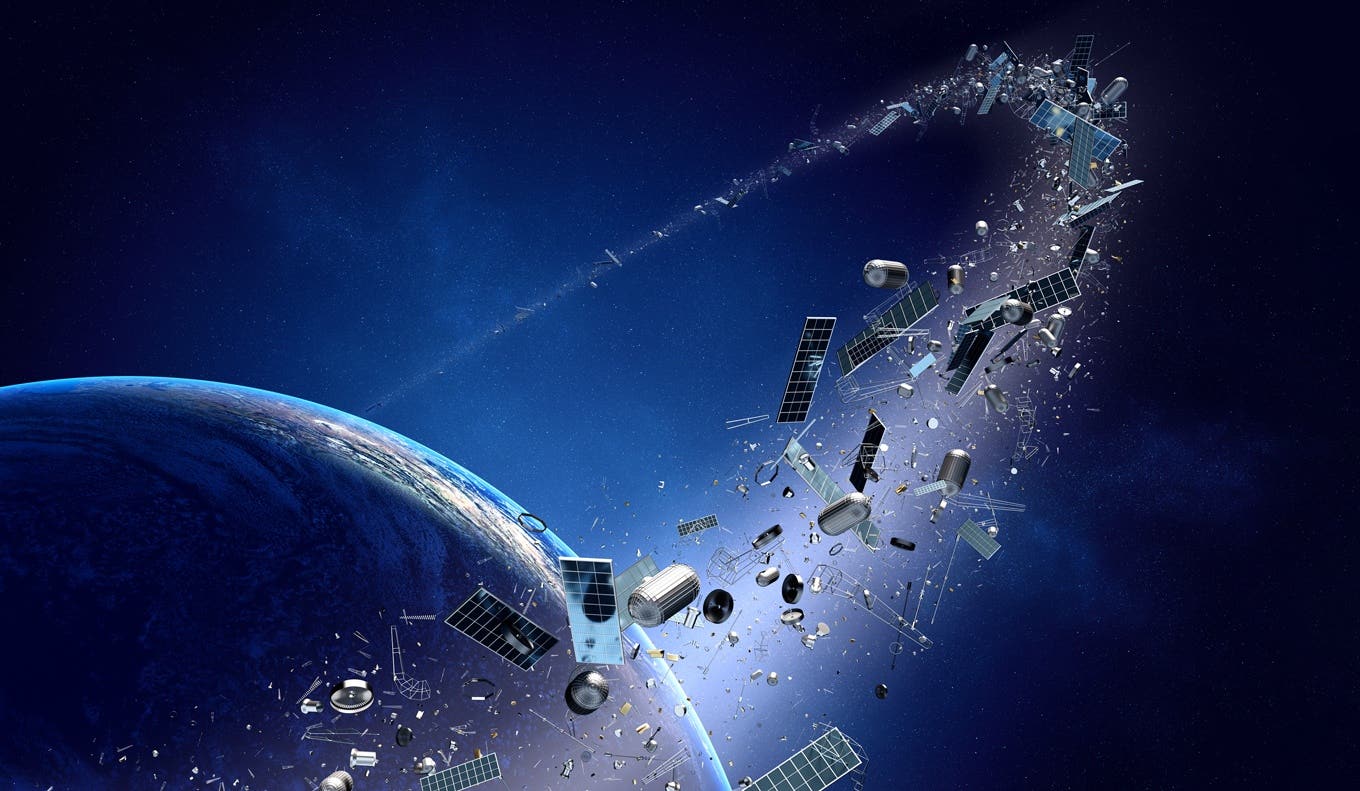Web-slinging robots in space
Preventing pieces of space debris from crashing into each other is a problem engineers have been grappling with for decades.

[Oct 28, 2021: University at Buffalo]
How to best utilize robot tether systems to corral some of the 27,000 pieces of debris that NASA tracks. (Credit: Creative Commons)
Preventing pieces of space debris from crashing into each other—or from falling uncontrollably down to Earth—is a problem engineers have been grappling with for decades.
Now Eleonora Botta, an assistant professor of aerospace engineering at the University at Buffalo, is using a National Science Foundation grant to examine how to best utilize robot tether systems to corral some of the 27,000 pieces of debris that NASA tracks.
Systems inspired by Spider-Man
Many of these space-cleaning systems call for using nets—imagine a satellite shooting a web, like Spider-Man—to capture and control debris.
“The idea is that, after a piece of space debris is captured, it is tugged to a disposal orbit by the active spacecraft the tether is deployed from,” says Botta. “For objects in low-Earth orbit, the disposal orbit would be such that the captured piece of debris would reenter and burn up in the Earth’s atmosphere.”
Related Stories
A paramount mission
Both Japan and the European Space Agency have launched satellites for similar operations. None have proved especially effective, however. With space debris collisions an increasing concern—the 20-ton Chinese booster rocket that crashed down to Earth last May could be just the start—the importance of improving the technology is clear.
For the grant, Botta will use powerful computers to model all components of the robot tether system. That includes a chaser spacecraft with sensors and actuators, controlled reeling mechanisms, the cable and net, as well as targeting and contact dynamics. She aims to find ways to make existing or proposed systems more effective as well as simpler and less expensive.
Safer reentry
Botta will also focus on what happens after the debris is captured. The system as well as the debris it captures are involved in a process known as “de-tumbling,” whereby an out-of-control object in space is brought under control.
An advantage of actively capturing and de-orbiting large pieces of debris, says Botta, is that their reentry trajectory can be regulated. If a piece of debris survived the reentry, she explains, “it would splash down in the ocean with extremely low probability of causing any casualties.”
Like these kind of feel good stories? Get the Brighter Side of News' newsletter.
Tags: #New_Innovations, #Robotics, #Space, #Satellites, #Debris, #Technology, #The_Brighter_Side_of_News
Joseph Shavit
Head Science News Writer | Communicating Innovation & Discovery
Based in Los Angeles, Joseph Shavit is an accomplished science journalist, head science news writer and co-founder at The Brighter Side of News, where he translates cutting-edge discoveries into compelling stories for a broad audience. With a strong background spanning science, business, product management, media leadership, and entrepreneurship, Joseph brings a unique perspective to science communication. His expertise allows him to uncover the intersection of technological advancements and market potential, shedding light on how groundbreaking research evolves into transformative products and industries.
